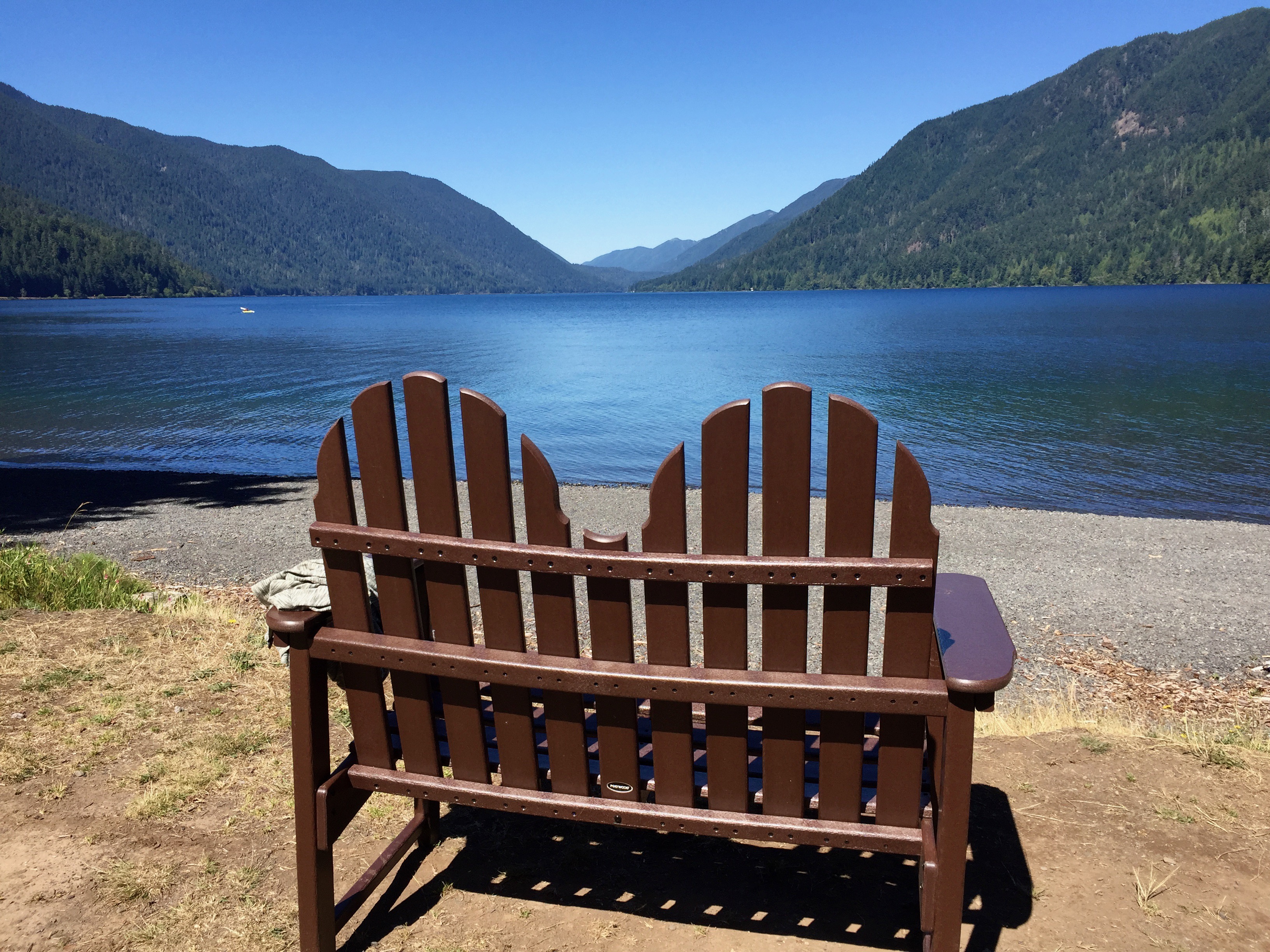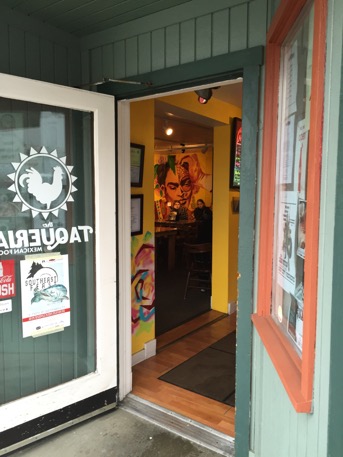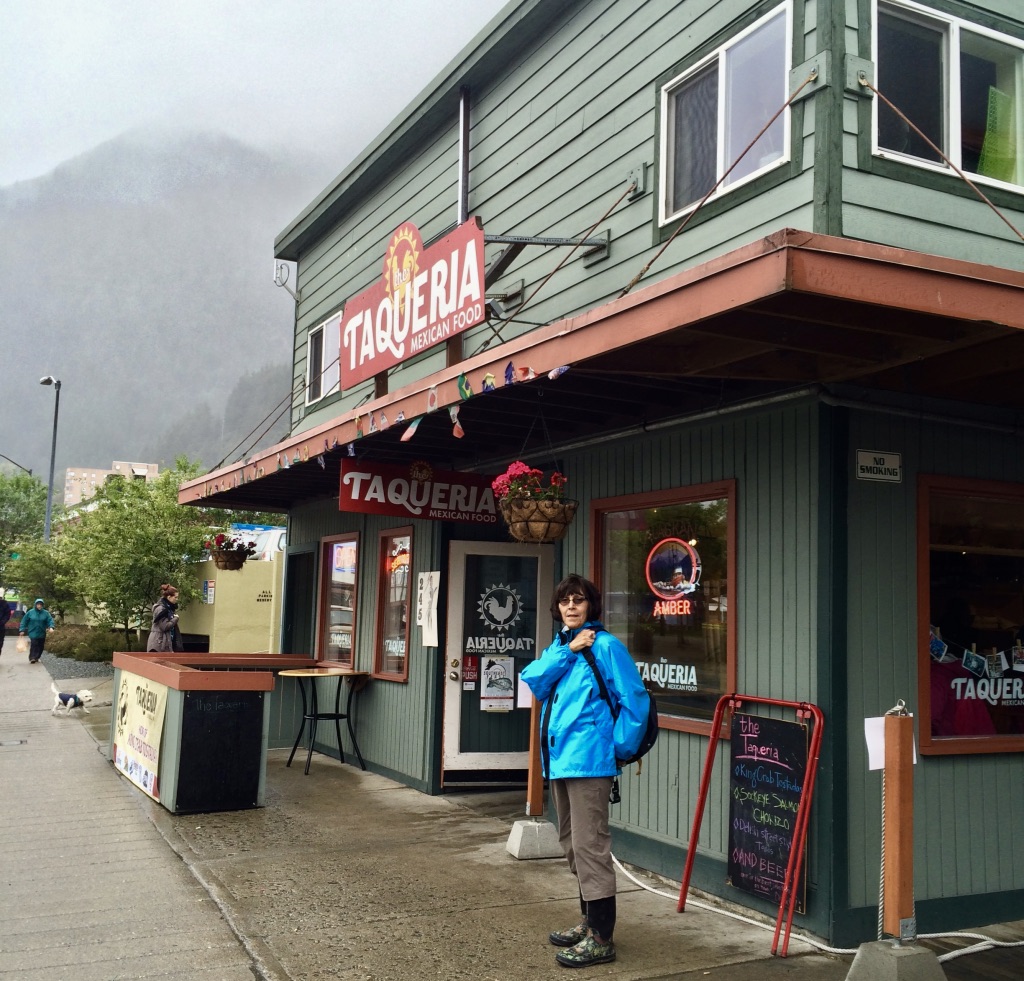 July 23, 2016 —
July 23, 2016 — Ready for lunch, we wander a bit around Juneau trying to decide what to eat — do we try something that’s native to Alaska or … wait … what? Tacos!?
Elisa notices
The Taqueria before I do …
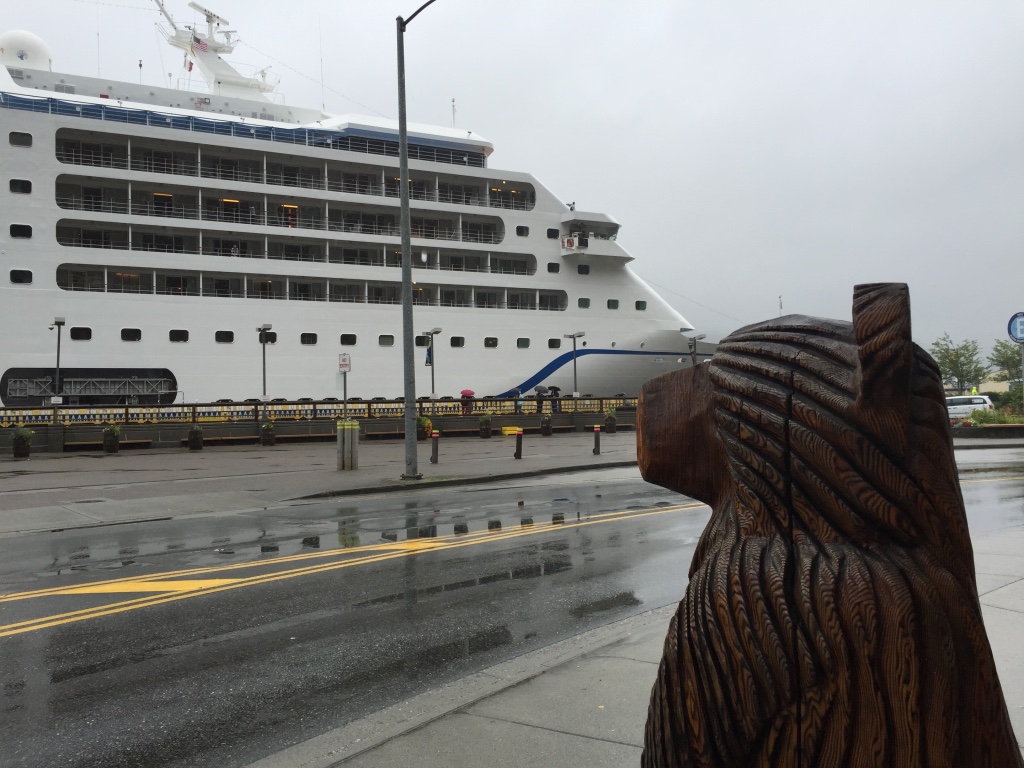
She calls to me, but I'm too busy taking a picture of the ginormous cruise ship that has just pulled into the harbor.
I’m standing right in front of
The Taquería, oblivious to the bright red sign just above me, but Elisa points: “Hey, look
➥ tacos!" I wonder out loud, filled with doubt: 'Just how good can the food be?'
We both stand there for a moment, but decide to pass, and walk away. I think to myself, 'You don't travel this far up north for tacos … nope.'
But, after walking aimlessly around town and find long lines at every restaurant (remember that cruise ship filled with people?). Soon, our stomaches start to growl and we get desperate, so I suggest we head back to check out the taco place.
As we enter, I see a large mural of Frida looking out from the back wall of the restaurant. The tables are decorated with hand-painted
calaveras, and the rest of the place looks quite cozy, Mexican-style.
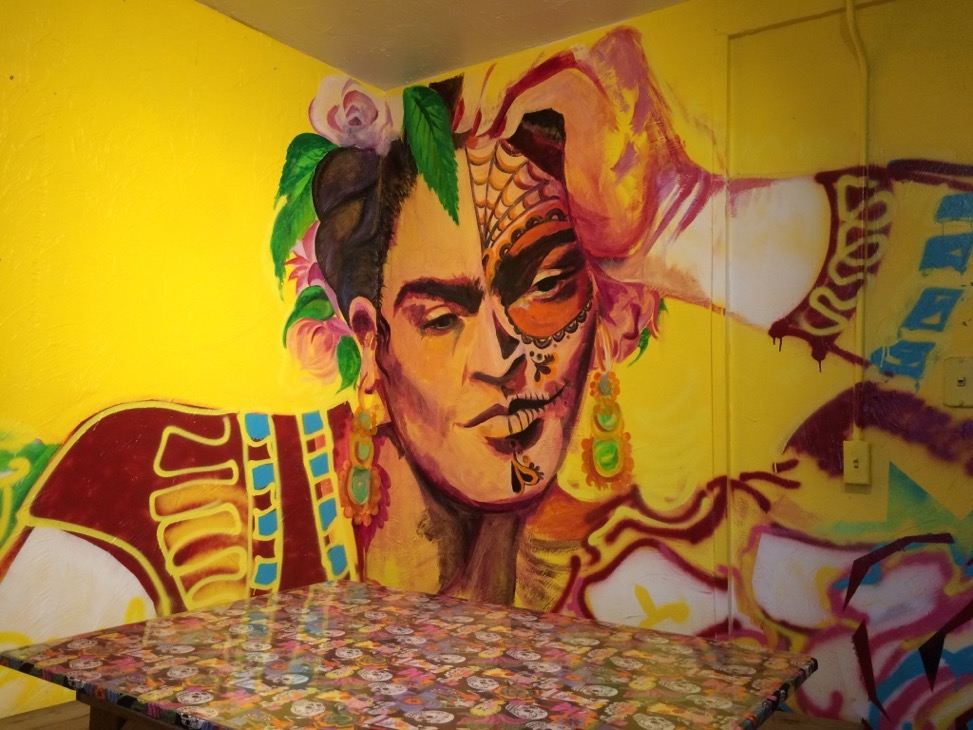
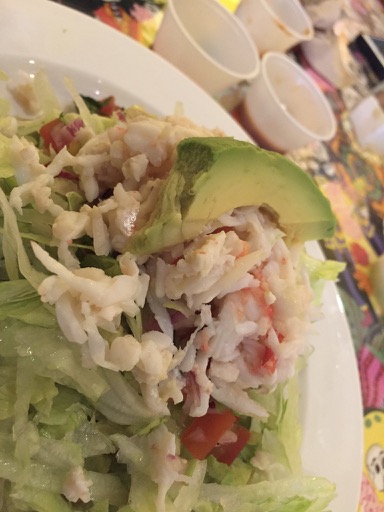
I order a cross-border fusion of Avocado-Salmon Tacos and beans. Wow! I definitely am not disappointed.
As we leave with a happy full belly, just outside
The Taquería, we see this local food cart that says:
Barbeque Filipino Style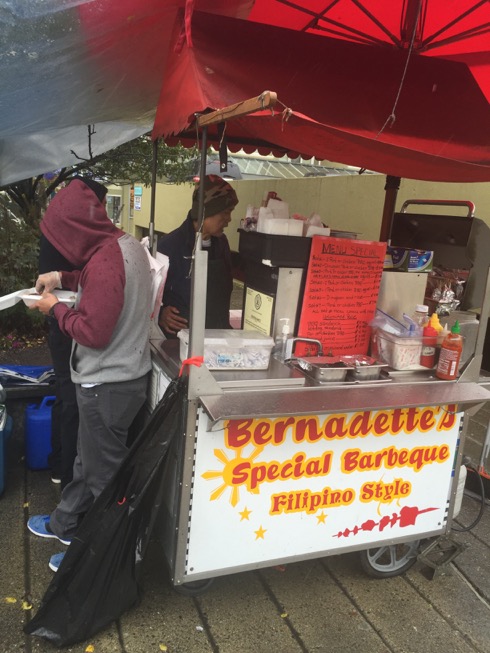
I also spot a local market just on the other side of the cart and walk in. Inside I find this scene: People quiet, busy looking at their phones. No one is talking. It’s the three clocks above that scene that catch my eye because each one has a different time zone — the flag of the Philippines is above the clock pictured above that’s farthest to the left. I ask the clerk behind the cash register about that and he tells me that immigrants from the Philippines who come to Juneau to work in the salmon industry come into the market daily to use the wi-fi so they can call or text home, and also wire money back home after pay-day. The clock helps them remember what time it is in the Philippines.
Turns out that Filipinos were breaking down borders in Alaska as far back as the 1700s.
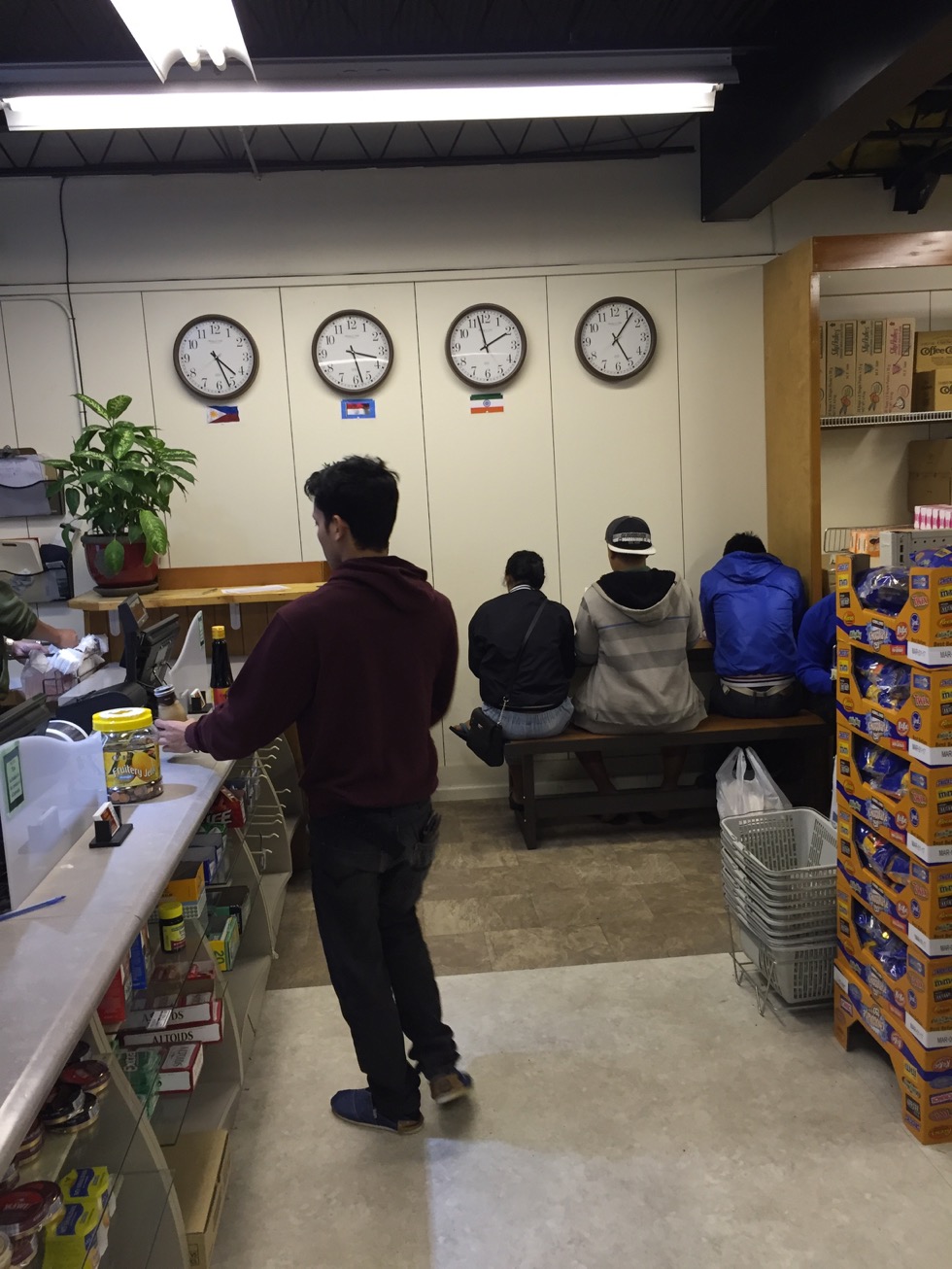
The story goes like this: People of Filipino descent represent the largest Asian American subgroup in the State of Alaska. Filipino seamen are recorded as having contact with Alaska Natives as early as 1788, and Filipino immigrants continued to arrive as workers in Alaska's developing natural resource industries: as sailors on American whaling ships; as ore sorters for gold mines in Juneau and Douglas Island; and as salmon cannery workers (called Alaskeros). Alaska's Filipino community has a long history of interaction and intermarriage with Alaska Native communities, and many Filipinos in Alaska also claim Alaska Native heritage.
Next ➤
